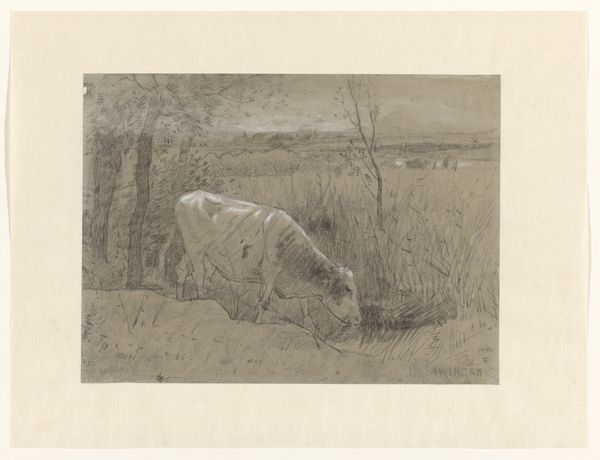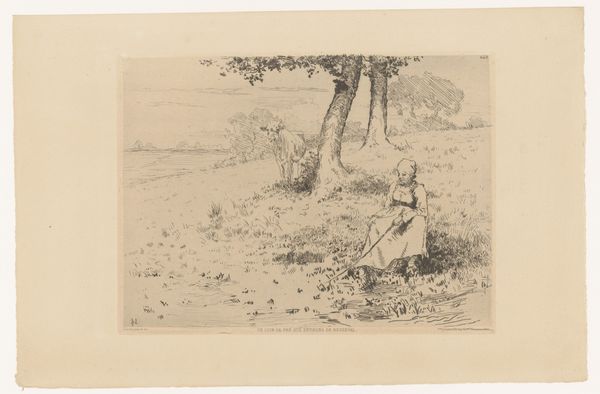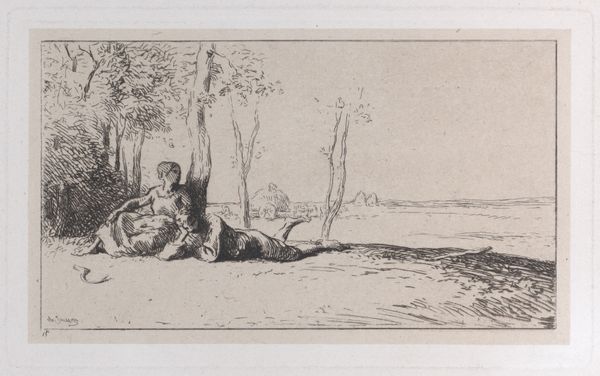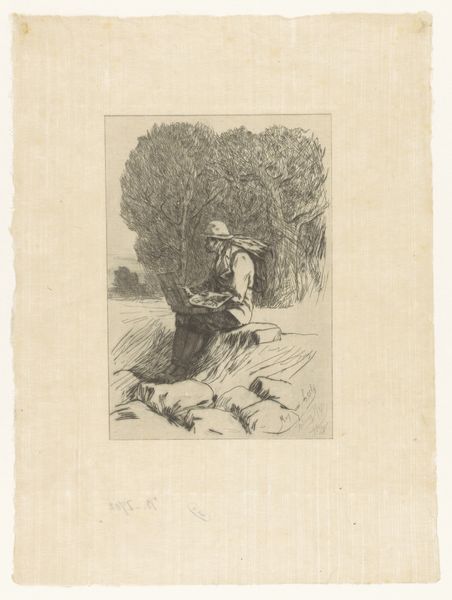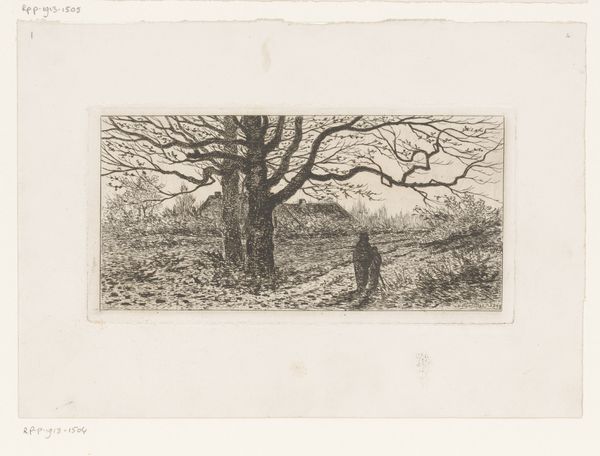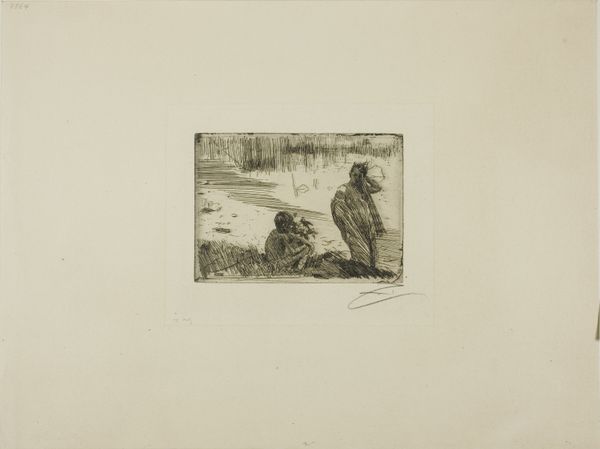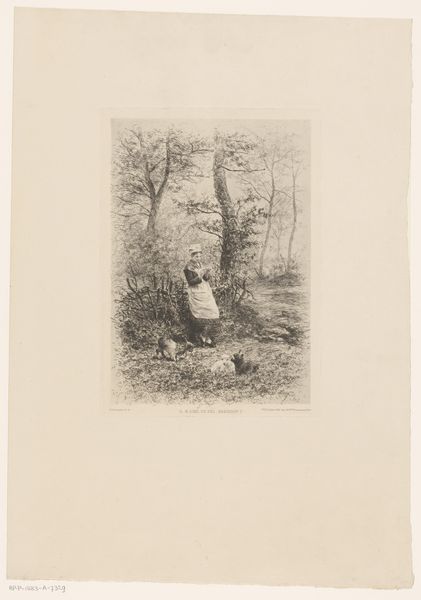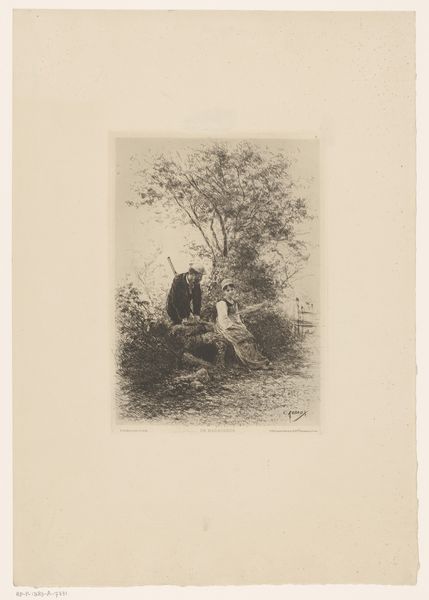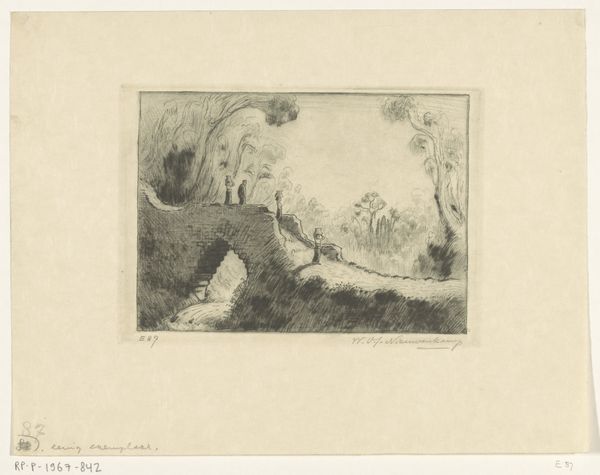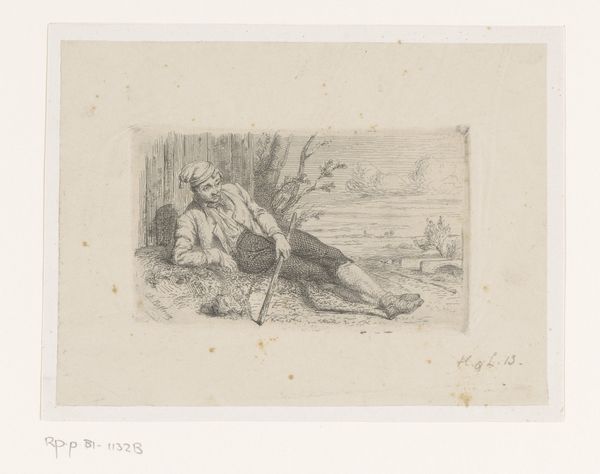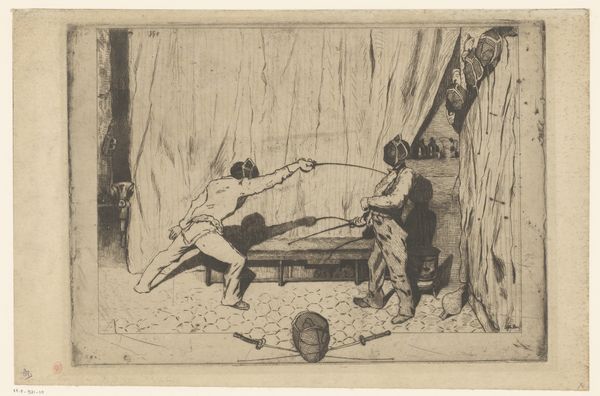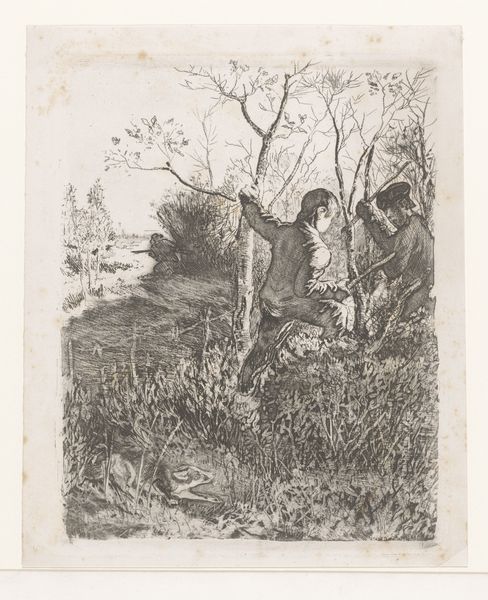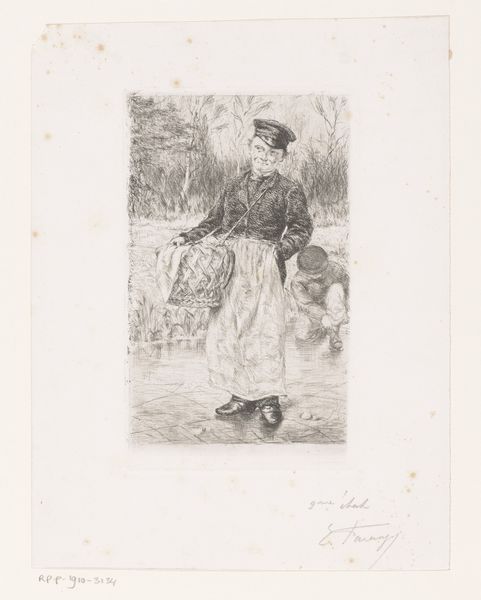
drawing, print, etching, paper, pencil
#
drawing
# print
#
etching
#
landscape
#
figuration
#
paper
#
pencil
#
realism
Dimensions: height 178 mm, width 229 mm
Copyright: Rijks Museum: Open Domain
Curator: This is "Zittende vrouw tegen een boom," or "Seated Woman Against a Tree," an etching and pencil drawing on paper created between 1864 and 1897 by Ernst Witkamp. Editor: There's a weary tranquility to it. The woman, clearly of the working class from her clothes and headscarf, seems utterly still, almost melting into the landscape. I wonder what kind of labor filled her days. Curator: The landscape itself is interesting, isn't it? A vast expanse with a hint of civilization—a distant building maybe? It's the Romantic era impulse: humanity within, yet dwarfed by, nature. The tree acts almost as a support, not just physically, but symbolically—a connection to the earth. Editor: Right, the very texture of the etching emphasizes the grain of the wood, the coarseness of the grass, grounding us in the real. The artist is attentive to the way the woman's clothing wrinkles and folds, which gives us information on the fabric and its durability, its production too. I notice also the tools she uses–the etching and pencil would’ve provided an accessibility of materials in terms of his artmaking. Curator: Absolutely, and note the woman’s gaze is directed slightly upwards and out of frame. Perhaps longing, hope. Head coverings and postures frequently represent an iconography of grief and resilience in nineteenth century art, though this artwork lacks strong cues to associate such sentiments with her image. The setting also seems timeless. Editor: True. There is a definite pre-industrial sensibility here. She's not framed by the symbols of encroaching modernity—the railroads, the factories, or even signs of consumerism— which amplifies a nostalgic appreciation for craft and production methods, a slower, more deliberate pace of life. The line of the etching feels very handcrafted. Curator: It evokes a feeling of connection to the past and nature, that simpler lifestyle before a fully modern age. This evokes, on a formal level, the tension between figure and environment, but maybe also progress and simplicity. The tension of past lives with modern ways. Editor: A return to essential elements that contrasts heavily to the means of making, itself industrialized. I suppose in today’s world, the notion of an industrialist making an etching also evokes those tensions that have carried into our time. Curator: Exactly, and there she sits—perhaps the artist or model found some solace there by the tree. Editor: A quiet statement against the grain of progress perhaps.
Comments
No comments
Be the first to comment and join the conversation on the ultimate creative platform.
